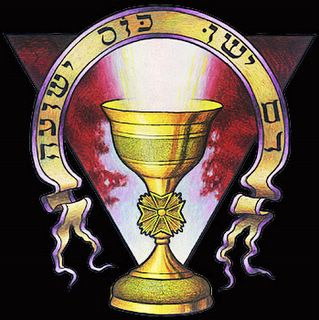The Romance of the Holy Grail

I have read the book "Holy Blood,Holy Grail" by Henry Lincoln et al, and was tremendously intrigued by it. The book itself is very well written and appears to be thoroughly researched. Since the publication of Dan Brown's novel "The Da Vinci Code", there has been renewed interest in the concept of the Holy Grail, and the theories behind the novel. In the following excerpt of the Holy Grail, you will read what researchers and clergymen alike think the Holy Grail really is, and at the end, I shall of course give my take on what I consider it to be.
~ Rads
*** .. *** .. *** .. *** .. *** .. *** ..
The Holy Grail [AKA The Grail, The Holy Chalice, The Cauldron,Sangrail, Sangreal, Sang-real, The Cup of the Last Supper, The Cup of the Crucifixtion] is generally considered to be the cup from which Christ drank at the Last Supper and the one used by Joseph of Arimathea to catch his blood as he hung on the cross. This significance, however, was introduced into the Arthurian legends by Robert de Boron in his verse romance Joseph d'Arimathie (sometimes also called Le Roman de l'Estoire dou Graal), which was probably written in the last decade of the twelfth century or the first couple of years of the thirteenth. In earlier sources and in some later ones, the grail is something very different. The term "grail" comes from the Latin gradale, which meant a dish brought to the table during various stages (Latin "gradus") or courses of a meal. In Chretien and other early writers, such a plate is intended by the term "grail." Chretien, for example, speaks of "un graal," a grail or platter and thus not a unique item. Wolfram von Eschenbach's Parzival presents the grail as a stone which provides sustenance and prevents anyone who beholds it from dying within the week. In medieval romance, the grail was said to have been brought to Glastonbury in Britain by Joseph of Arimathea and his followers. In the time of Arthur, the quest for the Grail was the highest spiritual pursuit. For Chretien, author of Perceval and his continuators (four works take up the task of completing the work that Chretien left unfinished, two of which are anonymous, one is by Mannesier, and a fourth is by Gerbert de Montreuil), Perceval is the knight who must achieve the quest for the Grail. For other French authors, as for Malory, Galahad is the chief Grail knight, though others (Perceval and Bors in the Morte d'Arthur) do achieve the quest. Tennyson is perhaps the author who has the greatest influence on the conception of the Grail quest for the modern English-speaking world through his Idylls and his short poem "Sir Galahad". However, James Russell Lowell's "The Vision of Sir Launfal", one of the most popular of nineteenth-century American poems gave to generations a democratized notion of the Grail quest as something achievable by anyone who is truly charitable. The notion that the Grail story originated in fertility myths was popularized by Jessie Weston in her book From Ritual to Romance, which was used by T. S. Eliot in the writing of The Waste Land. Eliot's poem, in turn, influenced many of the important novelists of his and succeeding generations, including Hemingway and Fitzgerald.
[ Source: http://www.lib.rochester.edu/camelot/grlmenu.htm ]
- http://www.newadvent.org/cathen/06719a.htm
*** .. *** .. *** .. *** .. ***
First and foremost, I do not purport to have any great knowledge on the matter. I can only say what it means to me from my understanding of what I have heard about the Holy Grail.
There are many versions of what the Holy Grail really signifies. For some, it is the Chalice from which Christ drank at the Last Supper. For others, the idea of it representing the Future and being a "bloodline" led them to believe that Magdalen was pregnant with Jesus' child. After having heard the variations of what it could truly be, I am more inclined to believe that Holy Grail is in fact NOT an actual object, but a Metaphor.
The search for the Holy Grail, is a search for oneself. I have never embarked on such a search, but I imagine at the end of such a journey, lessons will be learnt, and some kind of reinforcement of inner strength and will may be gained.
I recall an episode of The History Channel, where for the first time, I heard someone else agree that the Holy Grail is a metaphorical symbol. I guess to go in search of either the "chalice" or the "bloodline" would presuppose that the person strongly believes in his quest. If at the end nothing materializes, at least that person would know he had a strong conviction and followed it to the end. What greater reward is there than knowing you stuck with an ideal to the end? I guess sometimes what's really important is not so much what we can prove, but the fact that we believe.
~ Rads



0 Comments:
Post a Comment
<< Home